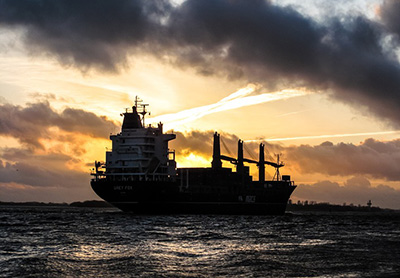Helping supply chain managers navigate the new ocean cargo marketplace

Editor's note: This item originally appeared on the website of LM's sister publication, Supply Chain Management Review, on September 16.
Mollie Bailey, Director, International, LCB, at Transplace, recently provided SCMR readers with insights and advice on how to leverage the new ocean cargo carrier scenario in this exclusive interview.
Supply Chain Management Review: How has the transformation of four primary ocean carrier alliances into three new large ocean carrier alliances altered the competitive arena?
Mollie Bailey: In some respects it makes it harder for shippers to differentiate service offerings between carriers in the same alliance. Destinations serviced, transit times, port terminals are uniform for the trade lanes that the alliances call. Rates and customer service are the primary differences now between carriers in shared alliances.
Shippers looking for improved transits, alternate services, different trade lane port rotations or loops are hard pressed to find options outside of the 3 major alliances other than niche, regional carriers.
Overall, since the alliances have kicked off in April, there have been notable changes to carriers schedules, loops, direct ports of call vs transshipments and that has impacted transit time and port options. Some carriers have chosen to stop calling low volume, unprofitable ports and regions. If contracted rates were in place, then carriers notified shippers they would no longer accept cargo for those destinations and shippers had to scramble to find alternate carriers many times at a higher cost.
With the changes in carrier ownership over the past year, some of the “carriers” listed as an alliance member are now actually a brand of the carrier owner. Example: CMA CGM owns APL; Maersk is buying Hamburg Sud, Hapag Lloyd bought UASC, COSCO is purchasing OOCL, Japanese carriers will form a single entity in April 2018; consequently the overall pool of competitors keeps decreasing. This lack of competition has allowed the carriers to begin to regain profitability and control rate fluctuations and space availability however as a shipper looking for alternatives it’s worrisome that 5 or 6 global carriers control all major global trade routes.
SCMR: What advice do you have for shippers when adapting to this new reality?
Bailey: It’s critical for shippers to understand which carriers are in which alliances and have balanced carrier coverage between the three alliances. Shippers should be aware for their contracted carrier, how much of the freight will actually move via the contract holding carrier versus an alliance member?
If shipper’s are booking through 3PLs rather than direct carriers, which carriers and alliances do those 3PLs work with? Can the shipper choose the carrier they want to work with under a NVOCC’s contracts? Knowledge is power and too many shippers acted surprised when Hanjin declared bankruptcy a year ago however warning signs had been building for months.
Be a smart consumer for your ocean services as for any product purchased!
SCMR: Any transactional tips you may wish to impart regard "best practices"?
Bailey: Require service from your carriers / providers! Ocean carriers for the most part still not consumer oriented. They can be bureaucratic, inefficient and challenging to partner with especially when problems arise. Responsiveness is difficult with many carriers. As mentioned above, when carriers are offering the same alliance services, sailings, transit times, ports of call; ensure that your carrier is providing service that distinguishes them from their alliance partners. Hold your carrier accountable during business reviews and use a global TMS or a provider that can provide meaningful metrics on quote turnaround times, on time departure / arrival, equipment availability and other meaningful KPIs.
Carriers need to make money to stay in business. Understand that the use of chassis’, port terminal space, extended container accommodations are extras and be fair in negotiations in exchange for good, proactive service.
Be carrier friendly: use electronic portals, load legal weights, meet required regulatory or documentation cut-offs in order to be easy to do business.
Last point is that some carriers don’t get it. Example, Transplace has a service contract with a major ocean alliance carrier as a NVOCC. They recently changed their format on providing transpacific market rates and the notification was sent in a broadcast, very confusing announcement inserted with other general trade announcements in a weekly news announcement email. We never received a communication directly from our carriers sales representative. When we challenged the carrier to assist understanding the new format the response was less than friendly and informative.
Why do business with a carrier that doesn’t want to do business with you?

Article Topics
News & Resources
Latest in Materials Handling
The (Not So) Secret Weapons: How Key Cabinets and Asset Management Lockers Are Changing Supply Chain Operations MODEX C-Suite Interview with Harold Vanasse: The perfect blend of automation and sustainability Consultant and industry leader John M. Hill passes on at age 86 Registration open for Pack Expo International 2024 Walmart chooses Swisslog AS/RS and software for third milk processing facility NetLogistik partners with Vuzix subsidiary Moviynt to offer mobility solutions for warehouses Materials Handling Robotics: The new world of heterogeneous robotic integration More Materials HandlingAbout the Author
Subscribe to Materials Handling Magazine

Find out what the world's most innovative companies are doing to improve productivity in their plants and distribution centers.
Start your FREE subscription today.
April 2024 Modern Materials Handling

Latest Resources










